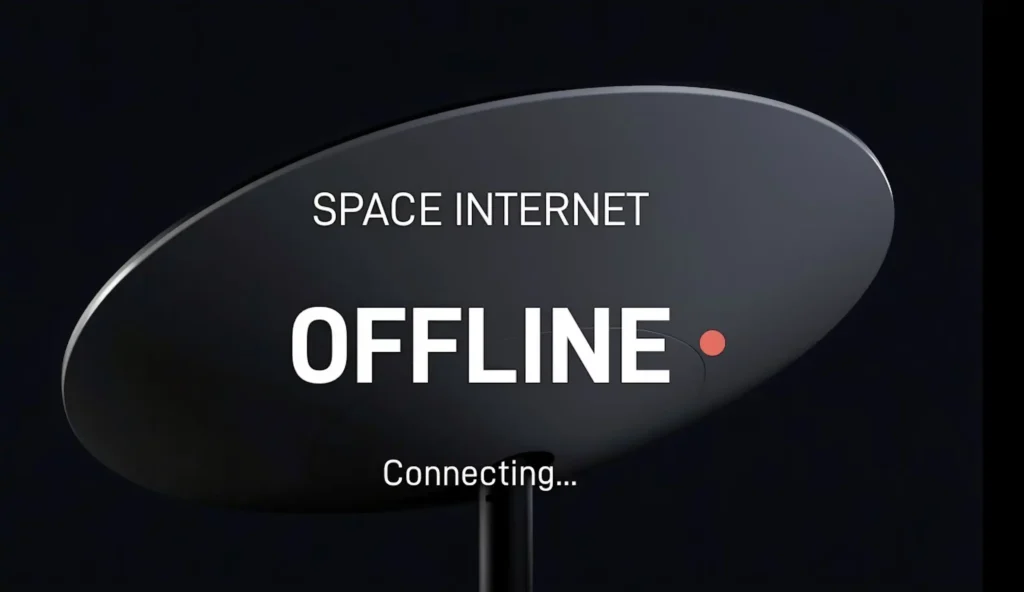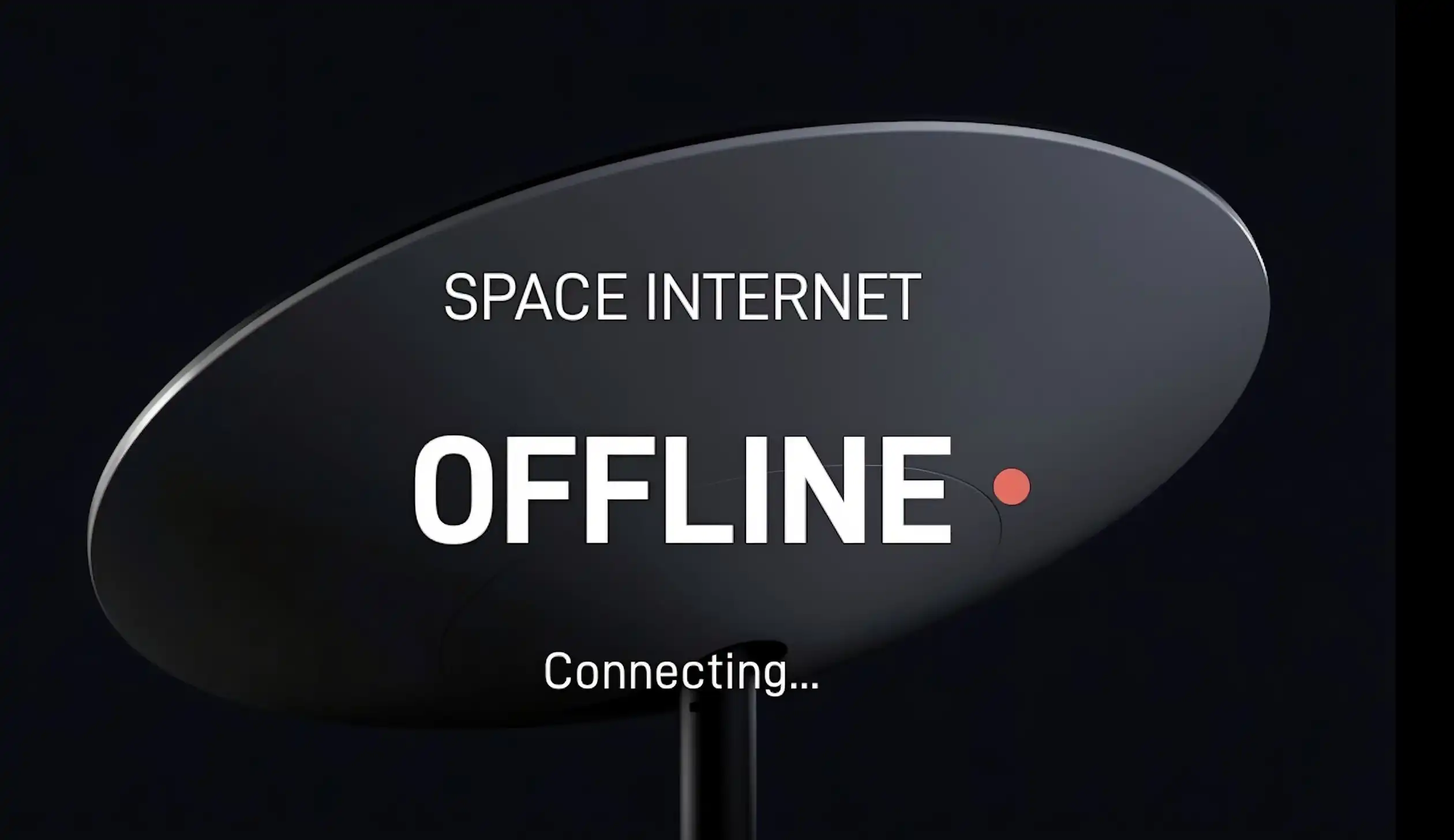Starlink Internet Outage Globally: Total Blackout
Elon Musk’s Starlink Network Suffers Rare Global Outage
Widespread disruption highlights growing global reliance on satellite broadband
Starlink, the satellite-based broadband network operated by Elon Musk’s aerospace company SpaceX, experienced a rare and extensive outage on Wednesday evening. This left thousands of users worldwide without internet access.
Video Credits To: https://www.youtube.com/@StatusGator
The outage began around 20:00 BST, affecting customers across the United Kingdom, mainland Europe, North America, Australia, and several parts of Asia. Online outage-tracking platform Downdetector reported a surge in user complaints. Reports peaked within an hour of the initial disruption. The scale and global reach of the incident made it one of the most significant service interruptions. Starlink has encountered issues since it began full-scale operations in 2020.
The Starlink support team acknowledged the problem shortly after reports began to circulate. They issued a brief statement confirming that the network was facing “a global issue”. They stated that engineers were working to implement a fix. The company later stated that services were gradually being restored. However, they have yet to provide a full explanation of the cause of the outage.
By early Thursday morning, service had resumed for most users. However, intermittent connectivity issues continued in isolated regions throughout the day. Starlink has not published a post-mortem report or identified the source of the problem. It is unclear whether the issue originated in satellite hardware, ground-based infrastructure, or software systems.

A Disruption with Global Consequences
Starlink operates by using a vast constellation of low-Earth orbit (LEO) satellites — now numbering over 6,000 — to beam high-speed broadband to remote and underserved areas. The system has grown rapidly in both scale and reach. It has an estimated user base of over three million subscribers worldwide.
The outage affected both private households and commercial users, including small businesses, farms, and maritime services in remote locations. In many cases, Starlink is the only viable alternative to traditional broadband or mobile networks. This is particularly true in rural and hard-to-reach areas where fibre optic connections are either unavailable or cost-prohibitive to install.
For these users, even a brief service interruption can cause significant disruption to daily activities. These range from routine communications to business transactions and access to public services. Some users reported being unable to process card payments or access cloud-based tools during the outage period. This further emphasises the degree of dependence that has grown around Starlink’s infrastructure.
In addition to its civilian customers, Starlink provides critical services to a range of governmental, humanitarian, and military organisations. Emergency responders and healthcare providers in remote locations also rely on the system. Although no major incidents were reported as a result of the outage, the situation has raised concerns about the resilience of next-generation broadband services when faced with technical failures.
Questions Over Network Resilience
The root cause of Wednesday’s outage remains unknown, with SpaceX and Starlink remaining tight-lipped about the underlying failure. Speculation in the technology sector has ranged from a possible malfunction within Starlink’s global network of ground stations to a configuration error during a software update.
Whatever the cause, the incident has drawn attention to the potential fragility of complex, satellite-based communications systems. Unlike conventional terrestrial internet providers, satellite networks depend on the seamless operation of thousands of individual units. They also rely on global coordination through Earth-based stations and software management systems.
As the Starlink system continues to expand — with plans to grow the satellite fleet to over 12,000 units in the coming years — the complexity of managing such a system also increases. Ensuring network stability and avoiding signal interference is no small feat. Also, maintaining synchronisation across such a vast architecture presents challenges. When one part of the system experiences failure, the ripple effects can be global.
Regulatory and Strategic Implications
The outage has also prompted renewed scrutiny from regulators and industry watchdogs. This is particularly relevant in light of Starlink’s growing role in providing essential infrastructure. In the UK and Europe, where regulators have granted Starlink permission to operate under certain spectrum conditions, questions are now being asked about oversight mechanisms and resilience planning.
As governments push for increased digital inclusion and seek to ensure connectivity in rural and coastal communities, satellite broadband services like Starlink have been touted as an essential tool. However, Wednesday’s disruption highlights the risks of over-reliance on any one provider or platform.
In addition, the strategic role that Starlink plays in defence and emergency response raises the stakes further. The system has already been adopted for use in disaster recovery scenarios, battlefield communications, and emergency deployments. As such, an unexplained, hours-long global outage could have severe consequences depending on the circumstances in which it occurs.
A Technological Success Still Under Scrutiny
Starlink has been widely praised for its performance and potential. Unlike earlier generations of satellite internet, which often suffered from high latency and low data speeds, Starlink’s LEO satellites allow for relatively fast and stable connections. The service has proven especially popular in remote parts of Canada, the Scottish Highlands, Australia’s outback, and isolated communities across the United States and Africa.
SpaceX continues to launch dozens of new satellites each month as part of its long-term goal to provide global coverage. This includes remote oceanic regions, polar areas, and low-income countries. Starlink also offers aviation and maritime services. Major airlines and shipping companies are now integrating the system into their operations.
Despite its success, the network has faced criticism on other fronts. Concerns include space debris and interference with ground-based astronomy. There is also worry about the concentration of power in the hands of a single private company. The recent outage is likely to intensify the debate over the need for international standards and collaborative frameworks for managing satellite networks.
Looking Ahead
Wednesday’s incident serves as a reminder that even the most advanced technologies are not immune to faults. While Starlink has proven to be a revolutionary service, the outage underscores the importance of redundancy, transparency, and public accountability. These are vital in infrastructure that is increasingly essential to modern life.
As SpaceX investigates the root cause of the problem and considers ways to prevent future disruptions, attention is likely to turn toward how such systems are monitored and regulated on a global scale.
Governments and private sector users alike will be watching closely for updates. They seek to understand not just what went wrong, but also the measures that will be put in place to ensure it does not happen again.













